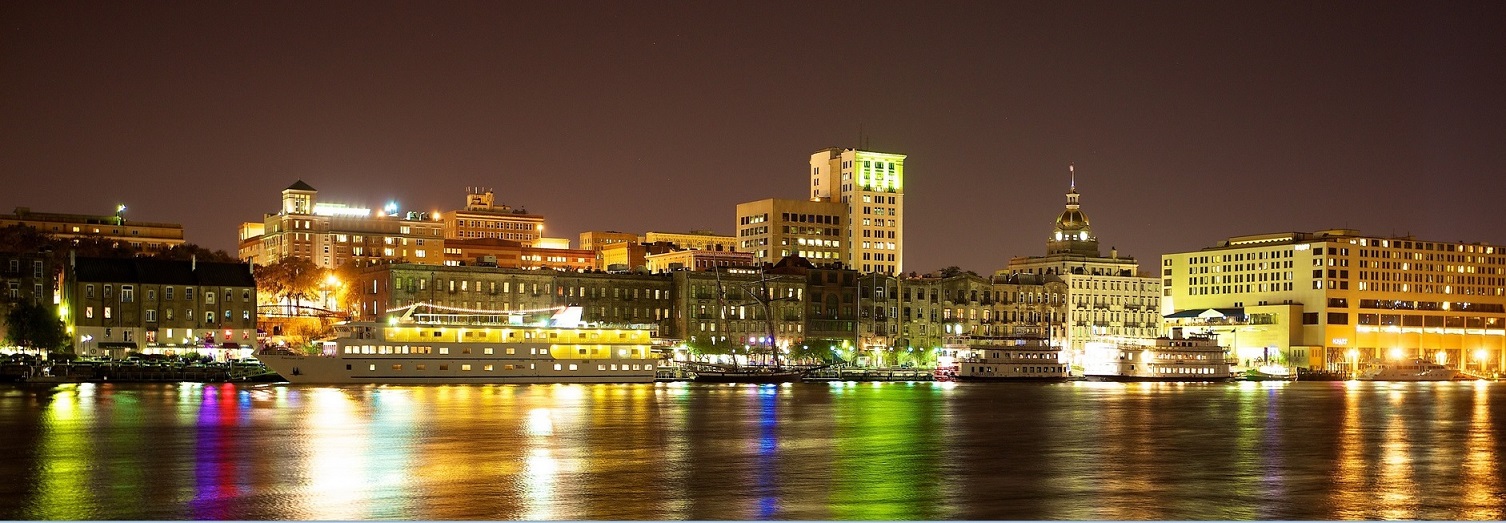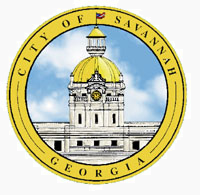Savannah
Introduction
Savannah is the oldest city in the U.S. state of Georgia and is the county seat of Chatham County. Established in 1733, the city of Savannah became the British colonial capital of the Province of Georgia and later the first state capital of Georgia. A strategic port city in the American Revolution and during the American Civil War, Savannah is today an industrial center and an important Atlantic seaport. It is Georgia's fifth-largest city and third-largest metropolitan area.
Each year Savannah attracts millions of visitors to its cobblestone streets, parks, and notable historic buildings: the birthplace of Juliette Gordon Low (founder of the Girl Scouts of the United States of America), the Georgia Historical Society (the oldest continually operating historical society in the South), the Telfair Academy of Arts and Sciences (one of the South's first public museums), the First African Baptist Church (one of the oldest African-American Baptist congregations in the United States), Temple Mickve Israel (the third oldest synagogue in America), and the Central of Georgia Railway roundhouse complex (the oldest standing antebellum rail facility in America).
Savannah's downtown area, which includes the Savannah Historic District, the Savannah Victorian Historic District, and 22 parklike squares, is one of the largest National Historic Landmark Districts in the United States (designated by the U.S. government in 1966). Downtown Savannah largely retains the original town plan prescribed by founder James Oglethorpe (a design now known as the Oglethorpe Plan). Savannah was the host city for the sailing competitions during the 1996 Summer Olympics held in Atlanta.
Quote
"Savannah is well known as a preservationist's wonderland, a city of Old World charm, with remarkable architecture that was spared from the torch by Gen. William Tecumseh Sherman and presented to President Lincoln in 1864 as a Christmas gift." -- Kevin Sack, NY Times
"I recall my fleeting instants in Savannah as the taste of a cup charged to the brim." -- Henry James, Nineteenth Century literary critic
"There are vaster and wealthier cities, but for architectural simplicity, for an indescribable charm about its streets and buildings, its parks and squares, there is but one Savannah. Without a rival, without an equal, it stands unique." -- Timothy Harley, a minister who visited Savannah late in the nineteenth century.
"A beautiful woman with a dirty face." -- Nancy Witcher Langhorne Astor, Viscountess Astor of England in 1946
Appearance
City Device
Climate
Districts
Demonym
- -- Savannahian
Economy
Geography
History
Introduction
The city of Savannah, Georgia, the largest city and the county seat of Chatham County, Georgia, was established in 1733 and was the first colonial and state capital of Georgia. It is known as America's first planned city and attracts millions of visitors, who enjoy the city's architecture and historic structures such as the birthplace of Juliette Gordon Low (founder of the Girl Scouts of the United States of America), the Telfair Academy of Arts and Sciences (one of the South's first public museums), the First African Baptist Church (one of the oldest black Baptist congregations in the United States), Temple Mickve Israel (the third-oldest synagogue in America), and the Central of Georgia Railway roundhouse complex (the oldest standing antebellum rail facility in America). Today, Savannah's downtown area is one of the largest National Historic Landmark Districts in the United States (designated in 1966).
The Growth of a Colony
Prior to arriving in America, Oglethorpe and close associates developed an elaborate plan for the growth of towns and regions within the framework of a sustainable agrarian economy and the challenges presented by an often hostile frontier. Features of the plan, now known as the Oglethorpe Plan, especially as it relates to town planning, have been preserved in Savannah, as well as in Darien, Georgia and at Fort Frederica National Monument.
Although religious toleration was beginning to emerge as a value during the Enlightenment, it was the pragmatic need to attract settlers that led to broad religious freedoms. South Carolina wanted German Lutherans, Scottish Presbyterians, Moravians, French Huguenots and Jews as a counter to the French and Spanish Catholic absolutist presence to the south, which was perceived as a threat to their English freedoms.
After Georgia became a royal colony (1754), there were so many dissenters (Protestants of minority, non-Anglican denominations) that the establishment of the Church of England was successfully resisted until 1752. These dissenting churches were the mainstay of the American Revolutionary movement that culminated in the War for Independence from Britain. Through the patriotic and anti-authoritarian sermons of their ministers, these churches fostered and organized rebellion. Whereas the Anglican Church tended to preach stability and loyalty to the Crown, Protestant sects preached heavily from the Old Testament, with its emphasis on freedom and equality of all men before God, and the moral responsibility to rebel against tyrants.
Over the next century and a half, Savannah welcomed other non-English and non-Protestant immigrants: Irish Catholics, French Catholics and Huguenots, Greek Orthodox, and others.
In 1740 George Whitefield founded the Bethesda Orphanage, which is now the oldest extant orphanage in the U.S.
Solomon's Lodge was founded in 1733/4 by James Oglethorpe, and it is considered to be the oldest continuously operating English constituted Masonic Lodge in the western hemisphere. Originally called simply the Lodge of Savannah, it was officially renamed Solomon's Lodge in 1776.
The Native Peoples of the 18th Century
The Yamacraws, a Native American tribe, were the first known people to settle in and around Savannah. In the 18th century, under their leader Tomochichi, they met the newly arriving European settlers.
The Arrival of the British
In November 1732 the ship Anne sailed from Britain carrying 114 colonists, including General James Oglethorpe. On February 12, 1733, after a brief stay at Charles Town, South Carolina, Oglethorpe and his settlers landed at Yamacraw Bluff and, in an example of some of the earliest "Southern hospitality", were greeted by Tomochici, the Yamacraws, and John and Mary Musgrove, Indian traders. (Mary Musgrove often served as a translator.) The city of Savannah was founded on that date, along with the Province of Georgia. Because of the friendship between Oglethorpe and Tomochici, Savannah was able to flourish unhindered by the warfare that marked the beginnings of many early American colonies. In July 1733, five months after the English colonists, 40 Sephardi Jews from Spain and Portugal arrived in Savannah, the largest such group to enter a colony up to that time.
Population
- -- City (142,772) - 2013 Census
- -- Metro Area (366,047) - 2013 Census
Arenas
Attractions
Bars and Clubs
Cemeteries
City Government
Crime
Citizens of the City
Current Events
Fortifications
Galleries
Holy Ground
Hospitals
Hotels & Hostels
Landmarks
Maps
Mass Media
Monuments
Museums
Parks
Private Residences
Restaurants
Ruins
Schools
Shopping
Telecommunications
Theaters
Transportation
Vampires of the City
- -- Penelope Huxley, Ventrue prince of Savannah
Websites
http://en.wikipedia.org/wiki/Savannah,_Georgia
http://travelblog.viator.com/bars-nightlife-in-savannah-georgia/

